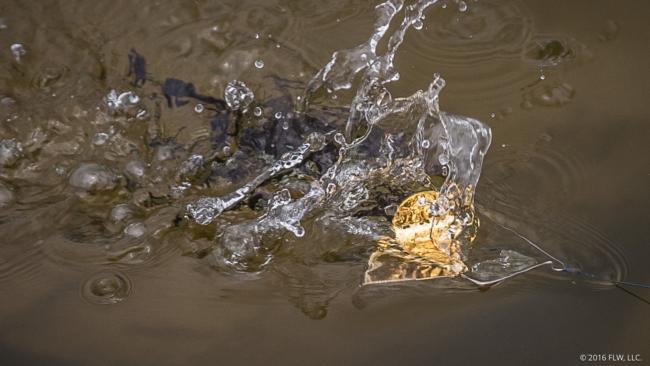How to Fish Buzzbaits for Bass
This classic topwater lure is perfect for covering water and targeting bass around shallow cover
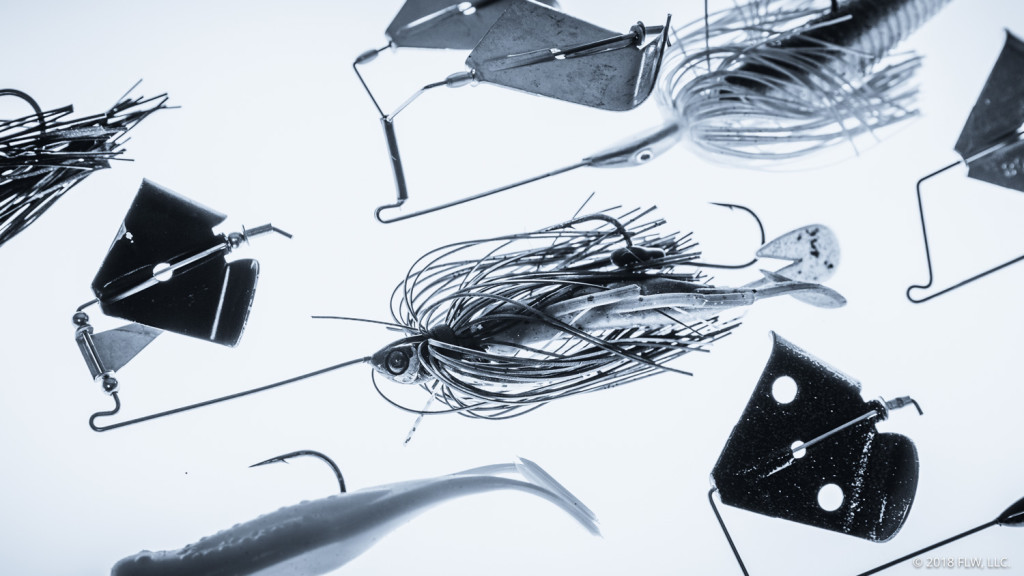
Buzzbaits are old-school topwater lures that are simple to fish and deadly effective in the right situations. They’re relatively weedless and are great for fishing fast and covering water.
Unlike most topwater baits, buzzbaits sink. You can keep one on the surface because the propeller-like blade up front lifts it up during the retrieve, creating a “buzzing” action and bubble trail that draw bass in to strike.
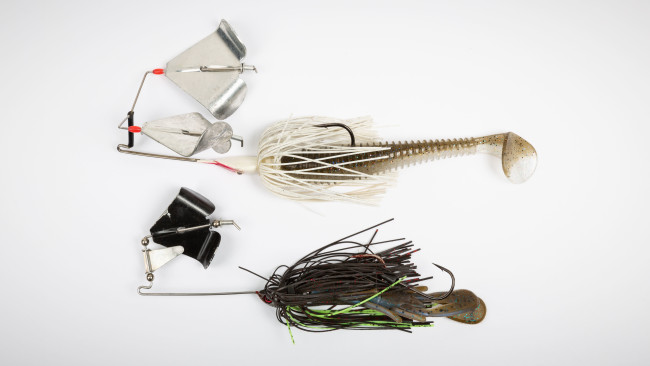
What is a buzzbait
Buzzbaits fit into the “wire bait” category because they’re built on metal-wire frames. The typical frame is bent into a J-shape, with a blade rigged on the short wire up top and a hook molded into a lead-head on the bottom, longer wire. An R-shaped bend at the front corner provides a place to tie up.
Most buzzbaits come with a silicone skirt and a lead keeper for attaching a toad, craw or swimbait trailer, but the more modern trend is to remove the skirt altogether and slide a soft-plastic toad up over the head. Some newer buzzbaits are designed with metal keepers that make it easier to rig the soft plastic this way. Whichever way you rig it, the best colors are black or any dark shade when the sky is overcast, white when the sun is shining and green pumpkin for imitating bream.
Half-ounce is probably the most common buzzbait size. There are also 3/8- and 1/4-ounce models. Rather than focusing on the weight of the bait, selection should be based more on blade size and wire frame size. The bigger the blade, the more commotion it makes on the surface. A smaller blade on a more compact buzzbait creates more of a finesse presentation and is usually easier to skip.
Finally, try experimenting with other variations of buzzbaits. Double-bladed models create a unique surface action. In-line buzzbaits, which are built on a single, straight wire, aren’t common but might have a place in your arsenal. And in-line/toad hybrids are designed with weedless hooks for adding a soft-plastic toad trailer. They come through just about anything except thick mats.
Buzzbaits in action
During the retrieve, the blade chops along on the surface, while the skirt/trailer and hook cruise along just below it. If the bait is “out of tune,” it might not track a straight line. Adjust its course by slightly bending the top wire side to side.
Regular buzzbaits squeak or squeal as they’re retrieved. The sound is caused by friction as the blade spins around the wire and is part of the lure’s attraction. There are also “clacker” buzzbaits that are made with a small bead, blade or wire arm that makes contact with the blade as it spins.
Every angler has a preferred buzzbait sound and volume, but generally louder, more obnoxious buzzbaits are favored for aggressive fish or windy conditions. The subtler variations work well in calm conditions.
How to fish buzzbaits
Fishing a buzzbait is simple. Cast it out, and as soon as it lands, start a fast retrieve to get the blade turning. The sooner you can activate the blade, the sooner you can begin an effective presentation.
Once the buzzbait is gurgling on the surface, you can slow the retrieve to a steady tempo and keep it there or burn the bait with a high-speed retrieve. Mixing in speed changes, direction changes or contact with cover can trigger fish to bite.
Be prepared because bass are notorious for swiping at a buzzbait, rather than engulfing the entire lure. A trailer hook will help catch more fish, and you’ll also hook up more often if you hesitate for a half-second after the bite to make sure the fish has the bait before setting the hook.
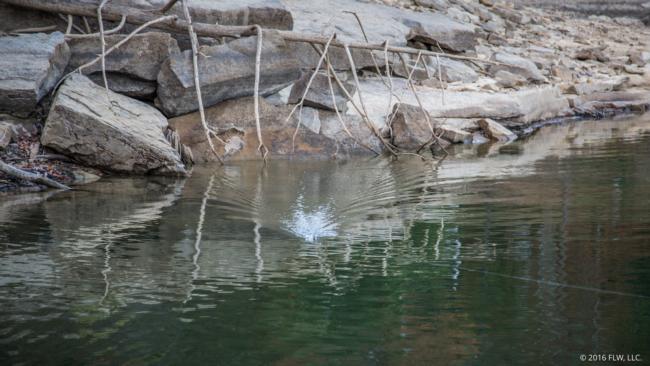
Where to fish buzzbaits
Buzzbaits are most commonly used to cover water aggressively. That might mean burning down the bank or taking advantage of their ability to come through “loose” cover such as scattered willow grass, reeds, flooded bushes, dock posts and standing timber. Pick apart those areas with repeated casts.
Scenarios for using buzzbaits range widely. At one time, most pros limited their use to the morning hours or in low-light conditions, but now they’re commonly used throughout the day, and throughout the seasons.
In the spring, when the water has just broken into the mid-60s and bass are starting to move up during the warmer parts of the day, pitching a buzzbait around flooded bushes is a good way to catch prespawn bass.
If bream are spawning along the banks on a sunny summer day, a buzzbait will catch bass prowling the shallows.
Fall is a great season for a buzzbait approach wherever you see baitfish along shorelines or on shallow flats.
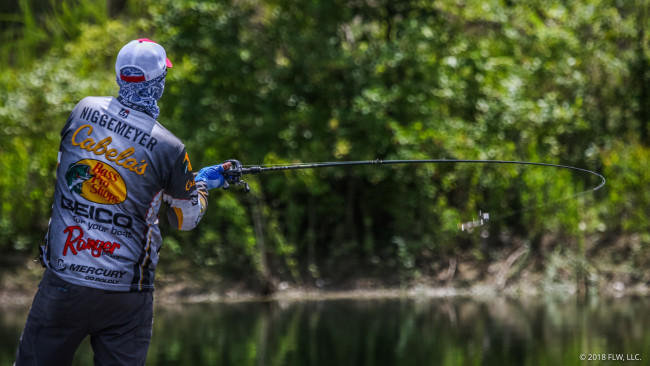
The best equipment for fishing a buzzbait
A medium-heavy or heavy baitcasting rod works best for throwing buzzbaits. Some pros throw them on their frog rods, but a typical jig rod would work, too. Go heavier when around grass or other cover where a hooked bass could bind you up. Choose a rod in the neighborhood of 7 feet to 7 feet, 3 inches. Go shorter for skipping docks or when accuracy is critical, and longer for making far casts.
Braided fishing line is best in most scenarios because it’s very strong and doesn’t stretch. Use 50- to 65-pound test. Fluorocarbon ranging from about 15- to 20-pound test works too.
Opt for a high-speed reel with at least a 7:1 retrieve ratio, though 8:1 might be better. The faster the retrieve speed, the easier it is to get the buzzbait’s blade turning, and the faster you can wind it in between casts.
Bait recommendations
Strike King Tour Grade Buzzbait
Strike King KVD Toad Buzz Buzzbait
Dirty Jigs Scott Canterbury Pro Buzz
V&M Buzz Frog (in-line/toad hybrid)
Strike King Premier Plus The Double Take (double-bladed buzzbait)
Accent High Rider (double-bladed buzzbait)
Line recommendations
SpiderWire Ultracast Ultimate Braid
Berkley Trilene 100% Fluorocarbon
Rod recommendations
Abu Garcia Vengeance Casting Rod
Lew’s TP-1 Black Speed Stick Casting Rod
Reel recommendations
Lew’s BB-1 Pro Speed Spool Casting Reel
Abu Garcia REVO STX Gen 4 Casting Reel
Abu Garcia REVO Rocket Casting Reel
